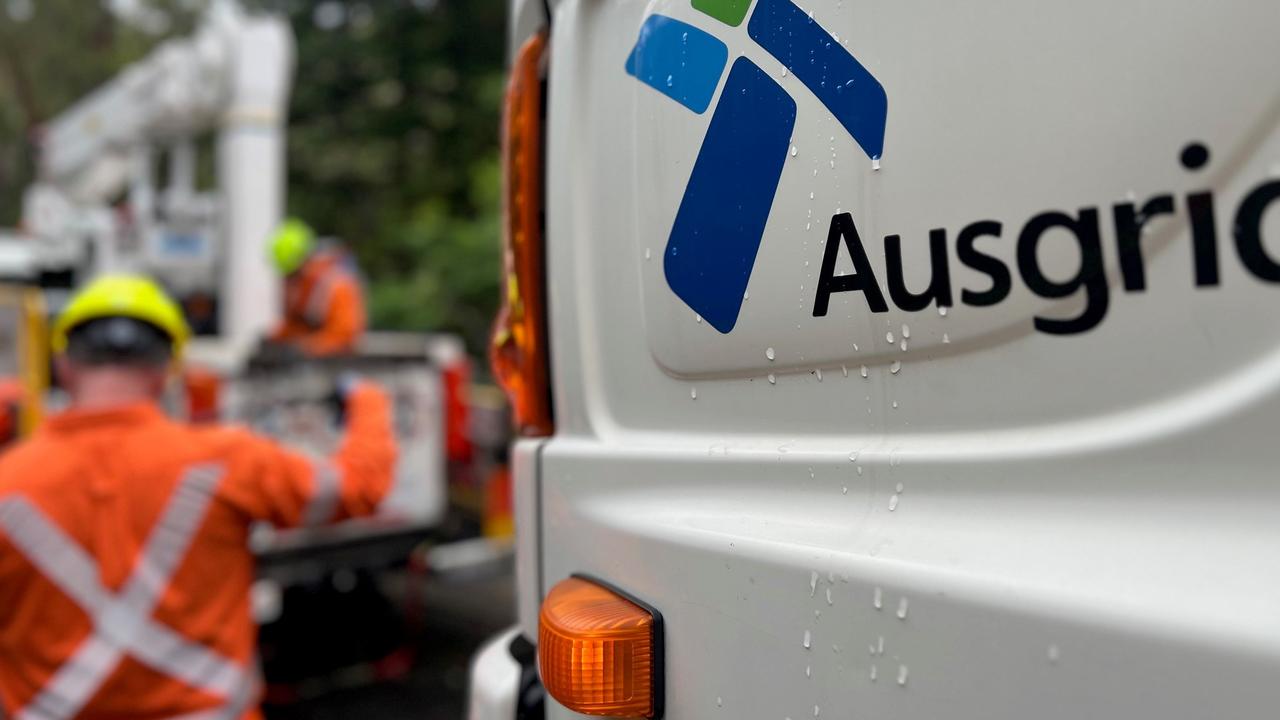Truth about the big tradie move that could change Australia forever
Shocking new statistics have revealed facts about migration that no Aussie tradie will want to hear.

At Work
Don't miss out on the headlines from At Work. Followed categories will be added to My News.
ANALYSIS
In the run up to the recent federal election, the issue of migration arguably took on the greatest level of political importance in recent memory.
From the comment sections of politician’s social media pages to the ABC’s Q&A, many Australians are concerned about the impact of migration on housing supply and the ability of infrastructure and services to keep up with the additional demand.
Looking at the hard numbers from the Australian Bureau of Statistics, it swiftly becomes clear why some have concerns. As of the latest migration figures, which cover up until the end of the September quarter of 2024, net migration was running at 379,800 people per year. Prior to the pandemic the all-time annual rolling peak was in 315,700 in the December quarter of 2008. Just prior to the pandemic, the last recorded level was 247,600.
One of the reasons put forward for high levels of migration into Australia is that migrants are required to build sorely needed homes, in a nation that is coming to grips with a housing deficit that some economists put in excess of 250,000 homes.
In decades now long past, recently arrived migrants did indeed play an absolutely vital role in providing the labour, skills and knowledge to not only resolve historical housing shortages, but also build some of the nation’s most vital infrastructure projects from Warragamba Dam to the West Gate Bridge.

But is that still true in the present? Is migration still playing a sizeable net positive role in adding to the nation’s housing supply?
In order to get a concrete handle on the contribution more recent migrants are making to the nation’s home building efforts, we will be contrasting how many migrants, both permanent and temporary work in occupations associated with home building versus the broader population based on figures from the ABS and an analysis from the Grattan Institute.
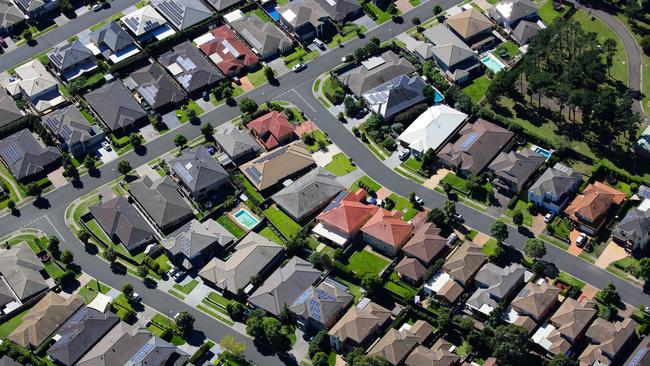
The broader sector
According to figures from the Grattan Institute, in 2021 migrants who arrived in the last five years accounted for 4.4 per cent of the labour force. When the focus is shifted to the construction sector, that cohort of migrants makes up 2.8 per cent of that industry’s workforce.
Taking the analysis back to those who arrived five to 10 years ago, this cohort makes up 5.38 per cent of the labour force and 4.09 per cent of the construction sector work force.
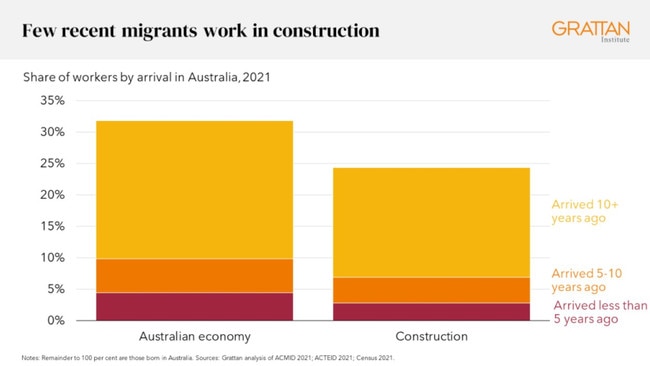
It’s here that a significant clarification is required. As of the last snapshot of the temporary migrant labour force prior to the pandemic, there were 56 per cent more New Zealanders working in the construction sector than every other temporary visa class put together.
This transpires in spite of the fact that at that time there were almost 60,000 more temporary visa holders of other varieties in the labour force than there were New Zealanders. This is potentially playing a role in skewing the proportion of migrants in the construction sector higher.
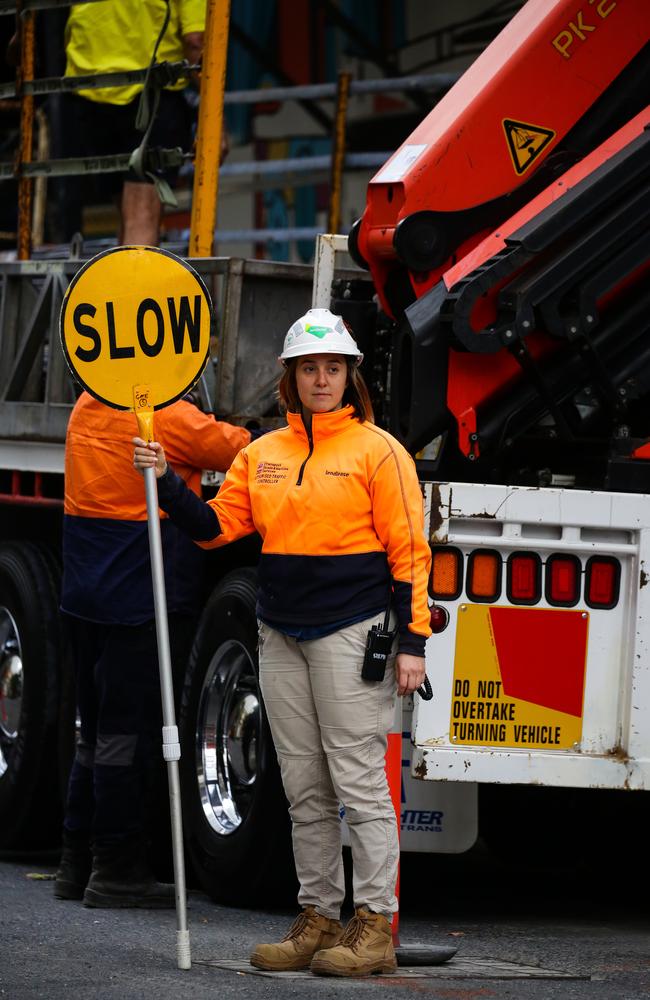
The tradie intake
Through the ABS reports on migrant employment outcomes, we can also gain a great deal of insight on what proportion of migrants in the various arrival streams are taking on employment directly in the trades associated with home building or as a site labourer.
To ensure that apples are being compared with apples, so to speak, we will be focusing on employment in what the ABS defines as “Construction Trade Workers” and “Construction and Mining Labourers”.
Overall, of the Australian populace (including Kiwi’s here under the ongoing visa arrangement with New Zealand) but excluding other temporary migrants and permanent migrants who arrived in 2000 or later, 4.62 per cent of the total labour force works in these trades at the proverbial coal face.
In terms of permanent migrants who arrived post-2000, at the 2021 census 2.94 per cent worked in these roles in construction. However, this figure masks vast differences in the different permanent visa streams into the nation.
Proportion of 2000 and later permanent migrant arrivals who are in employment in these roles by arrival stream:
• Skilled: 1.65 per cent
• Family: 3.06 per cent
• Humanitarian: 8.45 per cent
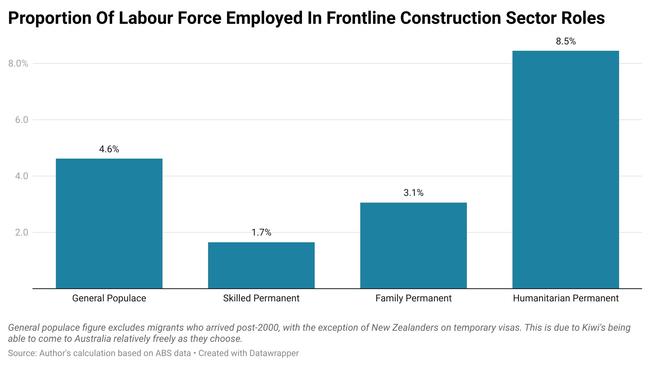
Migrants chosen for their skills who arrived in 2000 and later are 64.3 per cent less likely than the general populace to work on the proverbial tools. Permanent migrants arriving through the family stream are 33.8 per cent less likely to work in these construction sector roles.
The new Australians chosen to come here for humanitarian reasons are by far the most likely to work in these construction roles, with employed humanitarian arrivals 82.9 per cent more likely to be in these roles than the general populace.
The takeaway
Australia’s history illustrates that migration can absolutely be a solution to a lack of skilled labour to build homes and in time help alleviate acute housing shortages.
But in 2025, we have arrived at a juncture where in aggregate the current migration settings in net terms places more upward pressure on housing demand than it adds to the manpower to increase housing supply.
The migration intake in the present does not place the same emphasis on skilled tradesmen that it did historically. In fairness, it’s not like skilled home builders willing to pack up their entire life into a shipping container and journey half way across the world to what may be a strange new land grow on trees.
Ultimately the impact of migration on housing and rental supply is likely to remain a hotly contested political and social issue, one where perspectives may vary dramatically from person to person. But what is clear and far more concrete, is that the current migration intake is not delivering the capacity boost to the construction sector that it did in the past.
Tarric Brooker is a freelance journalist and social commentator | @AvidCommentator
More Coverage
Originally published as Truth about the big tradie move that could change Australia forever





